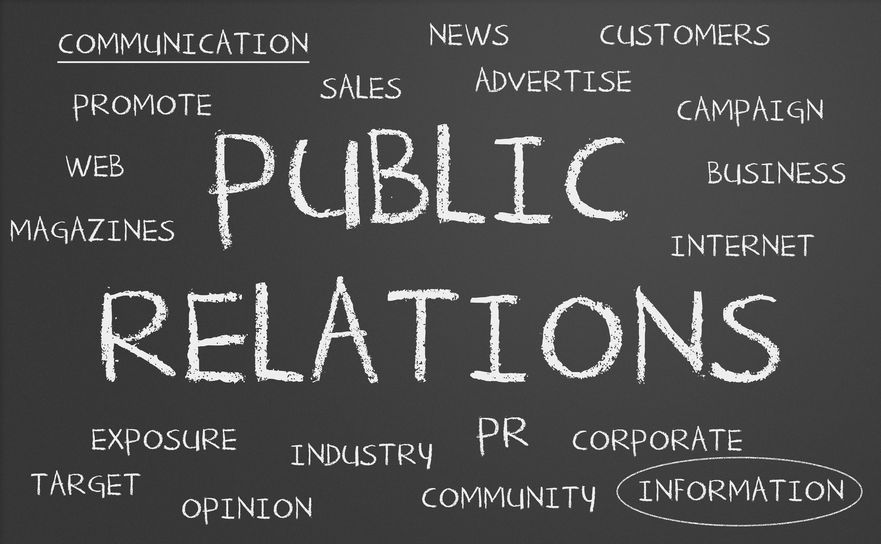
Since the introduction of the first public relations agency more than 100 years ago, public relations (PR) has evolved significantly. Our communications channels shape and reshape public relations. These channels include traditional mediums such as newspapers, radios and television. Newer channels used by PR include the internet and digital communications. Similarly, the activities performed by PR agencies and professionals have expanded too. Public relations includes managing special events, booking press conferences, engaging in media relations, making introductions and sending out press releases. It also crosses into reputation and crisis management, brand management and content development. As you think about your perceptions of PR, here are five common myths that need to be dispelled.
Five Myths About PR

- PR is no longer relevant. Platforms and strategies of PR are always changing. Companies can fall behind if they do not know how, where and when target audiences gather news and information. If you are treating public relations the same as you did years ago, it might be easy to think your PR strategy isn’t working and, therefore, is no longer relevant. Nothing could be further from the truth. The reality is public relations changes with the trends, technology and communication methods that resonate with the public. In fact, 87 percent of PR executives don’t believe “public relations” will describe the work they do in five years and is “too narrow” of a term. That is one reason why it is vital to stay on top of best practices and continue to adapt the role of PR to reach your audiences on the platforms they use.
- PR is just press releases and press conferences. Press releases and press conferences are likely the first things that come to mind when you think about PR. Yet, they are just the tip of the iceberg. Today, public relations encompasses more content development including the writing of bylined articles, blogs, white papers, newsletters, books, presentations, content for websites and other forms of communications. In addition, the process of pitching topics to the media, storytelling and generating earned media coverage are also important roles for PR professionals to fulfill. (Earned media is any material written about you or your business that you haven’t paid for or posted yourself.)
- PR is advertising. Advertising is a form of marketing communications, but it isn’t PR. Rather, the individual or company has paid money to place their message on a selected platform, whether that is on TV, cable, radio, or in online or print publications. This space is purchased with the goal of promoting a specific product or service. This means the individual or company controls the message which can be as self-serving as it chooses.
- One PR breakthrough is all you need. Some think that just one big hit in a major news outlet or a viral social media post is all it takes to win over the public. It will certainly help to boost your visibility, but it may not last long. Consequently, the work doesn’t end there. If anything, a big hit means it is time to push even harder with your PR initiatives. Then leverage that visibility into additional wins and new relationships. PR requires an ongoing and long-term strategy that not only builds visibility but also supports credibility and fosters trust.
- PR is only for dealing with problems. In mainstream media, we’ve often heard the term “PR scandal.” This leads to ideas of public relations teams working frantically behind the scenes to cover up a problem or address a crisis to save the reputation of a company. This type of PR is rare, and certainly should not be the foundation of an effective PR strategy. Instead, public relations needs to be the ongoing process of building a strong reputation. This only happens little by little, over the long haul. If you’re only reaching out only in times of crisis, you’re not creating ongoing opportunities for positive brand recognition and the perception of an organization that contributes to the greater good of society.
Understanding the Broad Role of Public Relations

According to Stephen Waddington, chief engagement officer at Ketchum, “Public relations is the practice of understanding the purpose of an organization and its relationships within society. It is the planned and sustained activity of engagement between these two parties to influence behavior change and build mutual understanding and trust. Engagement between an organization and its publics is the core of public relations practice. It is a two-way process by which an organization communicates with its publics and vice versa.”
At its core, PR is about earning positive attention and engagement for a brand. Accomplish this by capitalizing on the right channels, at the right time with the right messaging. It’s important for public relations and marketing to work together to determine how and when to do this. PR professionals and marketers create stories that inspire people to act, create and foster meaningful relationships and encourage engagement. Technology has changed PR and will continue to transform the tactics and strategies necessary to build a good public opinion. As channels and technologies evolve, companies must take advantage of opportunities to share their stories, amplify their brands and take marketing efforts to the next level.
